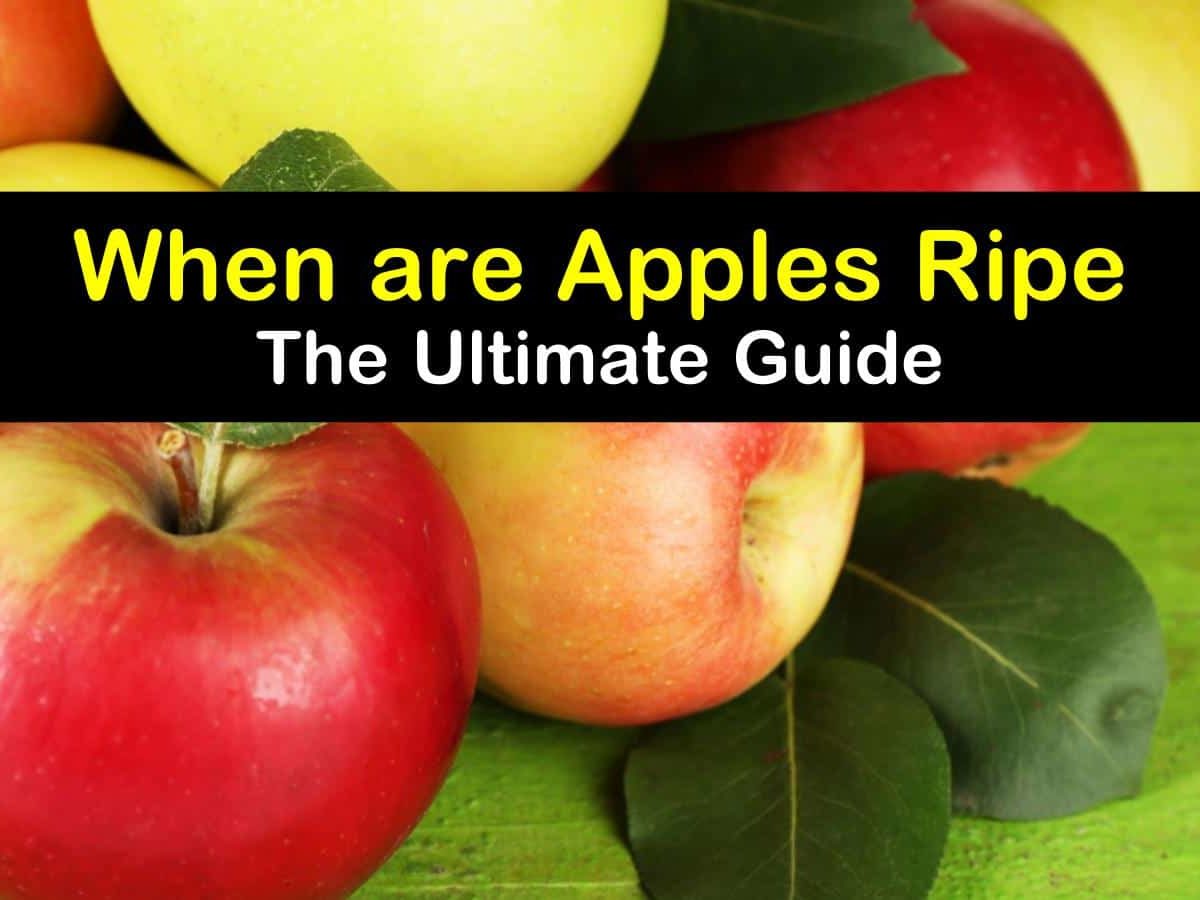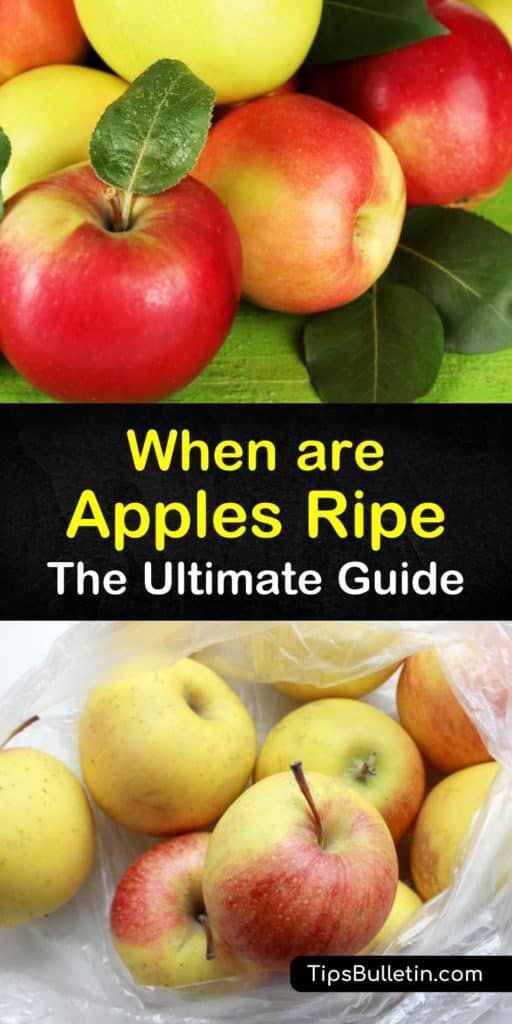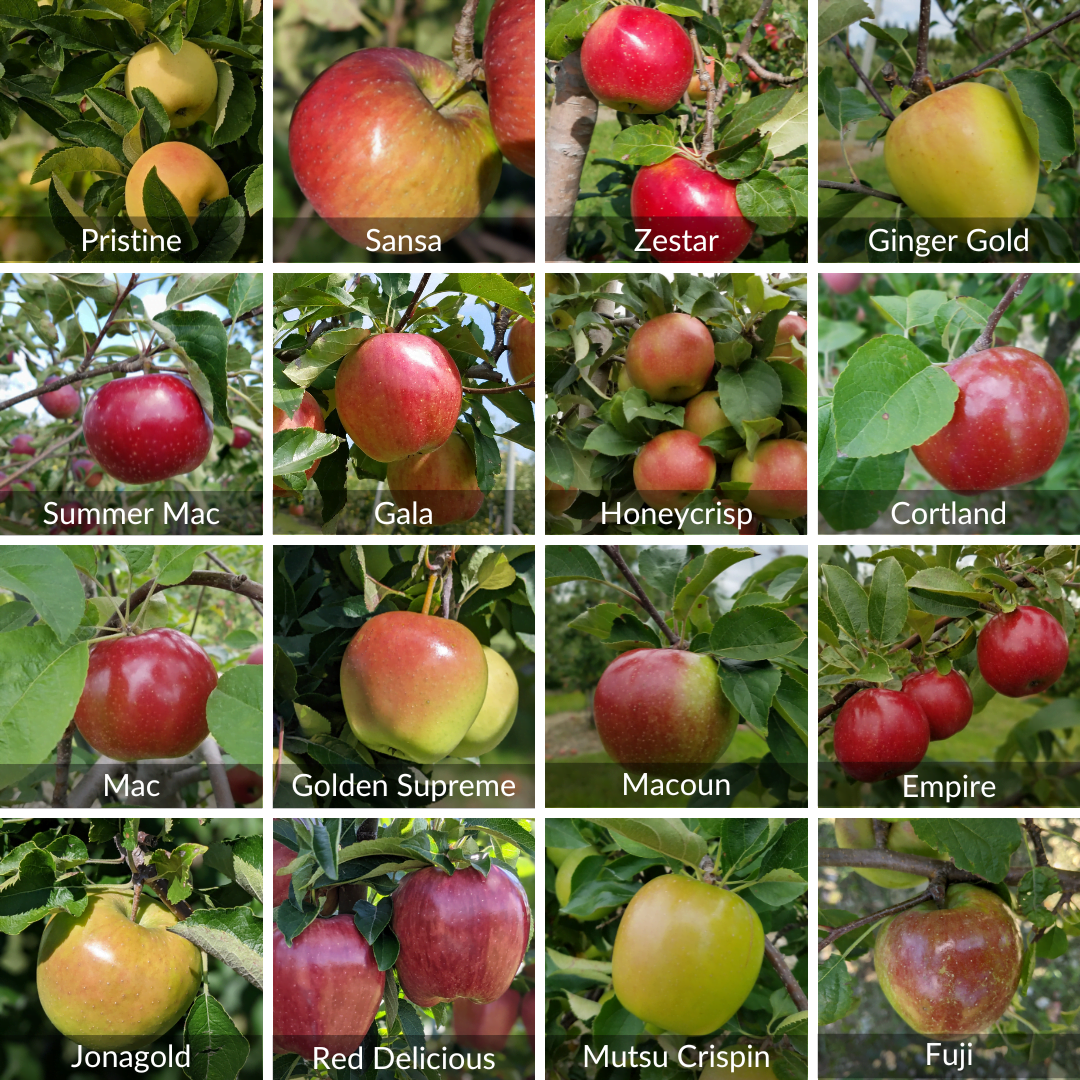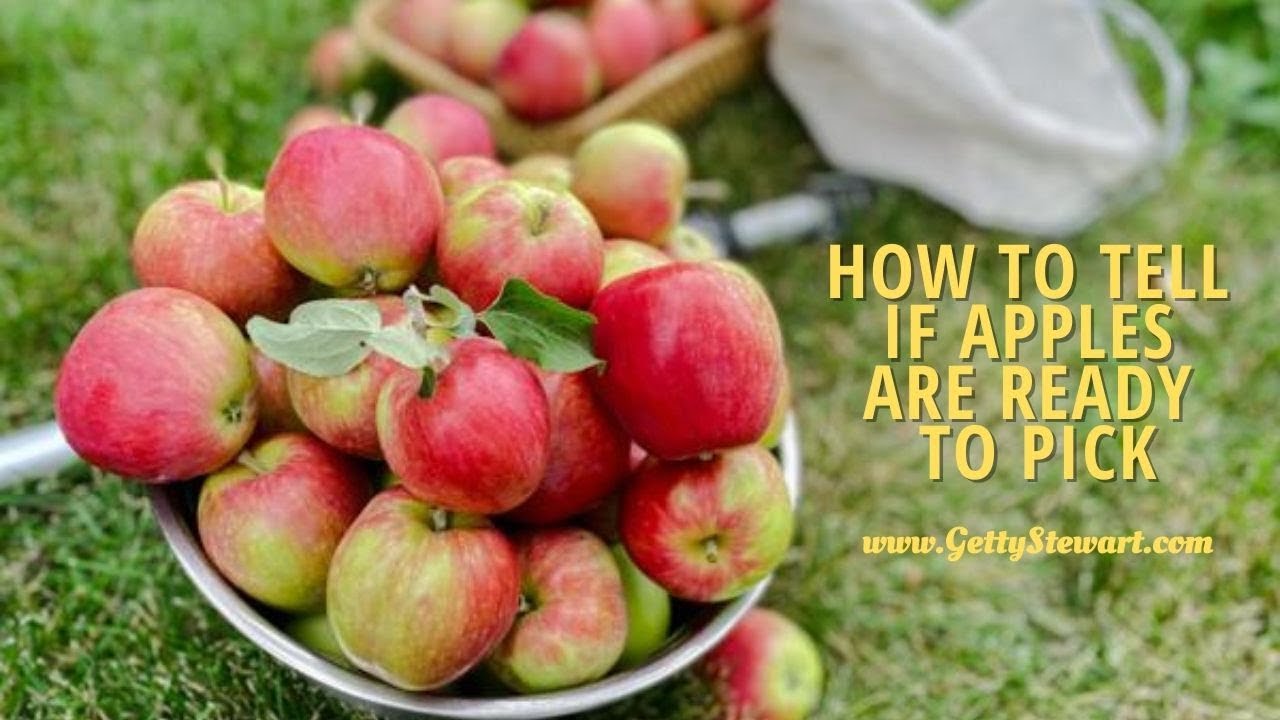You’ve picked a batch of delicious apples from the grocery store or harvested them from your own tree, but they’re not quite ripe yet. Don’t worry, because this ultimate guide will show you exactly how to ripen those apples to perfection. From the best storage methods to the tricks and tips for speeding up the ripening process, you’ll soon be enjoying sweet, juicy apples that are bursting with flavor. Whether you’re a beginner or an experienced apple enthusiast, this guide will have you enjoying perfectly ripe apples in no time.

Choosing the Right Apples to Ripen
Selecting Apples
When it comes to ripening apples, selecting the right ones is crucial. Choose apples that are firm and free from bruises or blemishes. Look for apples with a vibrant color and a fresh smell. Avoid apples that are mushy or have soft spots, as they may already be overripe and will not ripen properly.
Identifying the Ripeness of Apples
To determine if an apple is ripe, gently press your thumb on the skin. If it leaves a slight impression without feeling too soft, the apple is likely ready to ripen. Additionally, check if the apple’s seeds have turned brown. This is a good indicator that the apple is mature and ready for the ripening process.
Ideal Time to Pick Apples for Ripening
The ideal time to pick apples for ripening depends on the variety. Apples should be picked when they are fully grown and have reached their maximum size. Generally, apples are ready for harvest between late summer and early fall. It is important to pick them before the first frost, as it can damage the fruit and hinder the ripening process.
Considering the Apple Variety
Different apple varieties have different ripening characteristics. Some varieties, such as Granny Smith and Braeburn, are considered late-season apples and require a longer ripening period. Others, like Fuji and Honeycrisp, are known as early-season apples and ripen relatively quickly. Consider the variety of apples you have and adjust your ripening methods accordingly.
Storing Apples for Ripening
Preparing Apples for Storage
Before storing apples for ripening, it is essential to prepare them properly. First, remove any damaged or spoiled apples from the batch to prevent them from affecting others. Gently wash the apples with cool water to remove any dirt or residue. Let them dry completely before proceeding with the storage process.
Storage Containers for Apples
When it comes to storing apples for ripening, choose a container that allows for proper airflow. Avoid using airtight containers or plastic bags, as they can trap moisture and promote rotting. Instead, opt for woven baskets, wooden crates, or breathable mesh bags. These containers help maintain optimal humidity levels and allow ethylene gas, a natural ripening agent, to disperse.
Optimal Storage Conditions
To store apples for ripening successfully, it is important to provide them with the right conditions. Keep the temperature between 32°F (0°C) and 40°F (4°C). This cool environment helps slow down the ripening process and extends the shelf life of the apples. Also, maintain a humidity level of around 90% to prevent the apples from drying out.
Avoiding Ethylene Exposure
Ethylene gas is a natural hormone that accelerates the ripening process in fruits. However, too much exposure to ethylene can result in overripening or premature decay. To avoid ethylene buildup, it is recommended to store apples away from other fruits, especially those with high ethylene production like bananas and tomatoes. This separation ensures the apples ripen at a controlled pace.

Natural Ripening Methods
Ripening Apples at Room Temperature
One of the simplest ways to ripen apples naturally is by placing them at room temperature. Choose a well-ventilated room away from direct sunlight. Spread the apples out, allowing air to circulate around them. Check the apples regularly to monitor their ripening progress and promptly remove any overripe apples from the batch.
Using a Brown Paper Bag
Another method to ripen apples is by using a brown paper bag. Place a few apples inside the bag and fold the top loosely. The bag helps trap the ethylene gas released by the apples, creating a more concentrated environment for ripening. Remember to check the apples daily to prevent them from becoming overripe.
Using a Ripening Bowl
A ripening bowl is a convenient option for ripening apples. Choose a bowl with holes or slits to ensure proper ventilation. Place the apples in the bowl, making sure they are not overcrowded. This method allows for sufficient airflow while keeping the apples contained in one place for easy monitoring.
Placing Apples with Bananas or Tomatoes
If you want to speed up the ripening process, consider placing apples together with bananas or tomatoes. Bananas and tomatoes release high levels of ethylene gas, which can hasten the ripening of nearby apples. However, be cautious not to leave them together for too long, as excessive exposure to ethylene can lead to overripening.
Using a Ripening Chamber
For those who want to ensure optimal ripening conditions, using a ripening chamber is an effective method. A ripening chamber allows you to control temperature, humidity, and ethylene levels. This method is commonly used in commercial settings but can also be replicated on a smaller scale for home use.
Accelerated Ripening Techniques
Introducing Heat for Faster Ripening
If you are in a hurry to ripen your apples, introducing heat can speed up the process. Place the apples in a warm environment, such as a sunny spot or near a heater. Be cautious not to expose the apples to extreme temperatures, as it can cause them to lose moisture and result in a suboptimal texture.
Using a Ripening Box
A ripening box is a specialized container designed to accelerate fruit ripening. It utilizes various factors like temperature, humidity, and ethylene exposure to facilitate faster ripening. Place the apples in a ripening box and adjust the settings according to the manufacturer’s instructions. Regularly check the apples’ progress to ensure they do not become overripe.
Using a Ripening Gas
Some specialized ripening gases, like ethylene and acetylene, can be used to accelerate the ripening process. These gases are commonly used in commercial settings, but there are also home ripening kits available for individual use. Follow the instructions provided with the ripening gas to achieve optimal results.
Controlled Ethylene Exposure
Controlling ethylene exposure is crucial when trying to accelerate apple ripening. You can use ethylene emitters or generators specifically designed for ripening purposes. These devices release a controlled amount of ethylene gas, ensuring a consistent and efficient ripening process. Carefully follow the manufacturer’s instructions for safe and effective use.

Monitoring the Ripening Process
Checking Apples for Ripeness
Regularly check the apples for ripeness by using the thumb test mentioned earlier. Gently press your thumb against the skin and observe if it leaves a slight impression without feeling mushy. Additionally, check for brown seeds, as they indicate mature apples. Monitor the apples closely to ensure they ripen to your desired level of sweetness and texture.
Signs of Ripeness
Apart from the thumb test and brown seeds, other signs indicate that an apple is ripe. Look for a vibrant color. Many apples undergo color changes as they ripen, transitioning from green to red, yellow, or other hues specific to their variety. Furthermore, ripe apples generally have a sweet aroma and give a slightly fruity scent when sniffed.
Monitoring Ethylene Production
Ethylene production is a crucial aspect of apple ripening. Keep track of ethylene levels in the storage area, especially if you have introduced ethylene-inducing fruits like bananas or tomatoes. If the apples are ripening too quickly, it may be necessary to remove them from the ethylene-producing fruits to avoid overripening.
Examining Texture and Flavor
Besides visual indicators, texture and flavor are important factors in determining ripeness. Ripe apples should have a firm yet yielding texture when bitten into. They should not be hard or mushy. Taste a slice of the apple to ensure it has reached the desired level of sweetness and flavor intensity.
Taking Note of Color Changes
As apples ripen, they often undergo color changes. These changes can vary depending on the apple variety. Take note of the specific color changes for the variety you are ripening. For example, some green apples turn yellow when ripe, while others turn red. Understanding these color changes helps you identify ripe apples with accuracy.
Preventing Overripe Apples
Determining the Ideal Ripeness
To prevent overripe apples, it is important to determine the ideal ripeness for the specific apple variety you are ripening. Refer to reliable sources or consult experienced apple growers to understand the recommended ripeness levels. This knowledge will help you identify the perfect time to stop the ripening process and ensure optimal taste and texture.
Harvesting Apples at the Right Time
Harvesting apples at the right time plays a crucial role in preventing overripening. Avoid harvesting apples too early or too late. If harvested too early, the apples may not ripen properly and may be too tart or hard. Conversely, if harvested too late, the apples can become mushy or develop off-flavors. Take care to harvest the apples when they have reached their prime ripeness.
Proper Storage to Avoid Overripening
Choosing the right storage method and conditions is vital to prevent overripening. Ensure the storage temperature and humidity levels are within the recommended range. Regularly inspect the stored apples and remove any overripe or spoiled ones promptly. Proper storage practices significantly reduce the risk of overripening and maintain the quality of the fruit.
Monitoring Ripening Progress
Carefully monitor the ripening progress of the apples to prevent them from becoming overripe. Assess the texture, flavor, color, and aroma of the apples regularly. As soon as they reach the desired ripeness, transfer them to a cool environment or the refrigerator to slow down further ripening. Continuously monitoring the apples’ progress allows for timely intervention and maintains optimal ripening outcomes.

Tips for Ripening Apples
Avoiding Excessive Bruising
Handle apples with care to avoid excessive bruising, as bruises can accelerate rotting and affect the ripening process. Gently place the apples in storage containers or ripening methods, and avoid dropping or mishandling them. By preventing bruising, you ensure the apples ripen uniformly and maintain their quality.
Separating Ripe and Unripe Apples
To achieve consistent ripening, separate ripe and unripe apples. Mixing ripe and unripe apples can have adverse effects, as the ripe ones can cause the unripe ones to overripen. Keep them in separate containers or ripening methods to allow each group to develop at their own pace.
Using Different Ripening Methods Simultaneously
Experimenting with different ripening methods simultaneously can be beneficial. For larger batches of apples, try using different techniques for a portion of the apples. This allows you to assess which method yields the best results and helps diversify the ripening process for a more flexible outcome.
Ripening Apples in Batches
Rather than ripening all your apples at once, consider ripening them in batches. This ensures a continuous supply of ripe apples over an extended period. Staggered ripening also helps prevent wastage and provides you with freshly ripened apples whenever you need them.
Avoiding Exposure to Moisture
Moisture can spoil apples and lead to mold growth, affecting the ripening process. Store apples in a cool, dry place and avoid exposing them to excessive moisture. Wipe off any moisture or condensation on the surface of the apples before storing or ripening them. This precaution significantly reduces the risk of spoilage and maintains the apples’ quality.
Factors Affecting Apple Ripening
Temperature
Temperature plays a significant role in apple ripening. Cooler temperatures slow down the ripening process, while warmer temperatures accelerate it. Maintaining the right temperature range during storage and ripening ensures optimal ripening outcomes and helps control the speed of the process.
Humidity
Humidity levels can affect the quality and ripening speed of apples. High humidity helps prevent the apples from drying out, maintaining their texture and flavor. However, excessive humidity can promote mold growth and spoilage. Strive for a balance by keeping the humidity around 90% during storage and ripening.
Ethylene Gas
Ethylene gas is a natural plant hormone that triggers the ripening process. Apples produce ethylene gas, which can affect their own ripening as well as nearby fruits. Controlling ethylene exposure is crucial to achieving desired ripening outcomes. Utilize ethylene-inducing fruits strategically and consider using ethylene control devices or methods to regulate the gas levels.
Apple Maturity at Harvest
The maturity of an apple at harvest significantly impacts its ripening potential. Harvesting apples at the right maturity stage ensures they ripen properly. Immature apples may not ripen at all, while overly mature ones can quickly become overripe. Understanding the ideal harvest maturity for each apple variety is essential for successful ripening.
Varietal Characteristics
Different apple varieties have varying characteristics that influence their ripening process. Some varieties ripen quickly, while others take longer. This is influenced by factors such as sugar content, acidity levels, and skin thickness. Familiarize yourself with the specific qualities of the apple variety you are ripening to determine the most effective ripening methods.
Using Ripened Apples
Food Preparation
Ripened apples are versatile and can be used in various ways for food preparation. They can be eaten raw, sliced and added to salads, or used as a filling for pies, tarts, and turnovers. Ripened apples can also be cooked down to make applesauce, apple butter, or used as a topping for pancakes and waffles.
Storage Options
If you have ripened more apples than you can consume in one sitting, there are several storage options available. You can store them in the refrigerator, where they will stay fresh for a longer period. Alternatively, you can freeze them by slicing or chopping them and placing them in freezer-safe bags. Frozen apples can be used for baking or making smoothies.
Blending for Beverages
Ripened apples can add a delicious and refreshing twist to your beverages. Blend them into smoothies, juices, or even cocktails for a burst of natural sweetness. Combine them with other fruits, yogurt, and a dash of honey for a nutritious and flavorful drink.
Canning and Preserving
To enjoy the taste of ripened apples all year round, consider canning or preserving them. Make homemade applesauce, apple pie filling, or apple preserves. Properly preserved apples can be stored in sealed jars and enjoyed even when fresh apples are out of season.
Baking and Cooking
Ripened apples are perfect for baking and cooking. Use them in apple pies, crisps, or crumbles for a comforting dessert. They can also be used in savory dishes, such as roasted pork with apple stuffing or caramelized apple and onion chutney. The possibilities are endless when it comes to incorporating ripened apples into your culinary creations.
Frequently Asked Questions (FAQs)
How long does it take for apples to ripen?
The time it takes for apples to ripen varies depending on the variety and ripening method used. On average, apples take anywhere from a few days to several weeks to ripen. Factors such as temperature, humidity, and apple variety significantly influence the ripening duration.
What are the signs of overripe apples?
Overripe apples exhibit several signs, including a mushy texture, wrinkled skin, and a fermented or sour smell. Their flavor may also become excessively sweet or unpleasant. It is important to carefully monitor the ripening process to prevent apples from becoming overripe.
Can I ripen Granny Smith apples?
Yes, Granny Smith apples can be ripened, but it may take longer compared to other apple varieties. Granny Smith apples are typically known for their tart and crisp nature, and some people prefer to eat them in a less ripe state. However, if you desire a softer and sweeter apple, you can ripen Granny Smith apples using the methods mentioned in this guide.
Can I eat unripe apples?
While unripe apples can be consumed, they are generally more tart and have a firmer texture. Some people enjoy the crispness and tanginess of unripe apples, especially in savory dishes or salads. However, if you prefer a sweeter and softer apple, it is best to wait until the apples are fully ripe.
What is the best apple variety for baking?
The best apple variety for baking depends on personal preferences and the specific dish. Some popular apple varieties for baking include Granny Smith, Honeycrisp, Pink Lady, and Braeburn. These varieties offer a balance of sweetness and tartness, along with firm textures that hold up well in baking. Experiment with different apple varieties to discover your favorite for baking.



